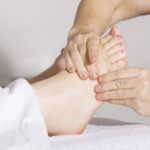Have you ever found yourself jumping out of bed, to be stopped in your tracks by that sharp pain in your heel?
You might have heard of the condition Plantar Fasciitis (or “Plantar Fasciopathy” as is now the more preferred name).
What is Plantar Fasciitis / Fasciopathy?
A de generative process involving the plantar fascia (the connective tissue underneath the foot), characterised by sharp pain, at the insertion of the plantar fascia onto the calcaneus (heel).
generative process involving the plantar fascia (the connective tissue underneath the foot), characterised by sharp pain, at the insertion of the plantar fascia onto the calcaneus (heel).
Pain is usually present on first steps in the morning, after a period of rest, or with prolonged walking.
What may be contributing to my pain?
It is usually associated with an increase in activity levels or workload. That may be an increase in training volume, distance, pace etc. It could be a change in footwear or running pattern. It could be that you are not giving your body enough rest in between sessions to recover. It can be something as simple as walking barefoot more than usual (eg. during the Summer months), or wearing flip-flops/open shoes that are less supportive than usual sneakers/closed-in shoes. Other factors that may be contributing to this condition are stiffness in your ankle joint from previous injuries, reduced flexibility of your big toe and decreased strength in your calf and foot muscles.
How long can I expect recovery to take?
As a guideline, there are usually two phases to recovery:
-
Reactive/ deloading phase (2-8 weeks).
Pain is usually dominant in this stage. Treatment usually consists of offloading the plantar fascia and modifying aggravating activities. Your physiotherapist can usually help you with strategies and treatment modalities in these early stages.
-
Reloading phase (8 weeks- 6+ months)
In this phase pain has usually settled in the morning and on walking, and is usually limited to an increase in loading of the plantar fascia.
The idea in this phase is to gradually reload the plantar fascia, using specific strengthening protocols, with a long term goal of returning to your usual activity or sport. Again, it is important you check in regularly with your physiotherapist during this stage, as you will need to progress your exercises, to make sure the plantar fascia is able to withstand increases in load.
sure the plantar fascia is able to withstand increases in load.
Through both phases it is important to identify the contributing factors (eg. footwear, stiff ankle joint etc..) that caused the condition in the first place, so that they can be addressed to ensure the problem does not return again in the future.